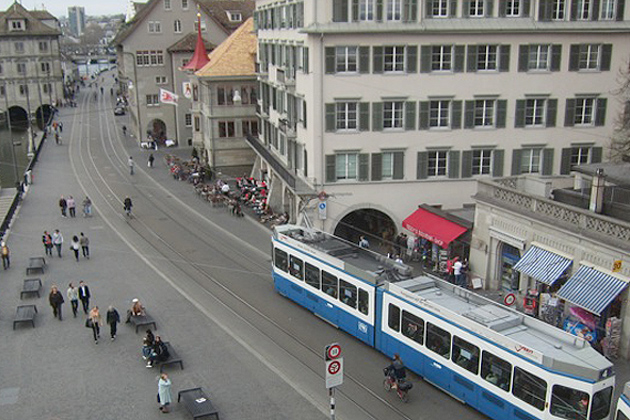A group of researchers in UConn’s departments of geography and civil and environmental engineering have developed and tested a new index that will measure the sustainability of complex urban transportation systems across the globe.
The index will allow policymakers, scientists and the public to understand not just how congested cities’ transportation systems are, but the economic, social, and environmental impacts of the system as a whole.

“Policy in developed countries and in the U.S. in particular has tended to focus on relieving congestion and has largely ignored social and environmental impacts associated with expanding freeways,” says Carol Atkinson-Palombo, assistant professor of geography in the College of Liberal Arts and Sciences. “This index takes a more holistic approach, which gives a comprehensive sense of the effects of the system.”
The Transportation Index for Sustainable Places, or TISP, is part of the July themed issue of the journal Research in Transportation Business & Management, edited by Atkinson-Palombo, Norman Garrick, associate professor of civil and environmental engineering, and Wesley Marshall, a former graduate student of Garrick’s who is now a faculty member at the University of Colorado, Denver. Timothy Garceau, a Ph.D. student in geography, was a lead author on one of the papers in the issue.
Before coming to UConn, Garceau worked as a city planner for four years. He says that although sustainability is a buzzword, people have a hard time defining it.
“Our team was trying to find a way to measure, in a tangible fashion with data, what it means to be considered sustainable transportation,” he says.
Garrick says that many people only think about transportation in terms of traffic. These so-called congestion indices, he says, are misleading because they are not necessarily about making the city better, but simply moving cars more efficiently.
“In many cities, only 40 percent of the people commuting are in cars,” he points out. “The majority of the people aren’t affected by the congestion index, yet this is the only measure of the impact of the transportation system that is ever discussed in the media.”
Policy in developed countries and in the U.S. in particular has tended to focus on relieving congestion … This index takes a more holistic approach.
The TISP takes into account environmental factors like land use efficiency, minimizing natural resource consumption, and reducing greenhouse gas emissions. Social factors are also measured, such as meeting access needs, incorporating public health and safety and maintaining a community in areas served by transportation. These factors combine with economic measures, such as affordability, self-sufficiency, and efficiency, to create a comprehensive metric.

When the team used the index to look at transportation in the U.S., they found some not-so-surprising results: areas with higher rates of driving rather than public transportation have greater carbon emissions, and having more cars and highways increases traffic fatality risk.
But despite the prevailing perception, says Garceau, the researchers found that developing varied transportation systems that include a combination of roads and public transportation are more cost-effective than simply building highways.
“At the state level, it’s cheaper per person to build and maintain diverse transportation systems,” he says.
“Transportation planning needs to be focused on all the things transportation affects,” adds Garrick. “We can’t just focus on mobility and the false idea that more mobility means a better economy.”
Many cities have already begun to take bold steps in their transportation planning, says Atkinson-Palombo. Some cities have begun dismantling freeways that run through their downtowns to reconstruct a truly urban atmosphere. Others are building light rail and bus rapid transit systems and encouraging walking and bicycle use by building compact, mixed-use communities that focus on pedestrians rather than cars.
Garrick points to Cambridge, Mass., Portland, Ore., and New York City as U.S. cities that have taken strides toward sustainable transportation. On a smaller scale, he cites Storrs, the home of UConn’s main campus, for developing a walkable town center and planning for better bus access as it develops its downtown area.
“There are quite a lot of options open to policymakers to make transportation systems more sustainable if they start asking more pointed questions about its true effects,” says Atkinson-Palombo. “Our main objective is to provide a framework for policymakers to understand how sustainable their systems are relative to other places, as a starting point for considering what may help them improve.”


